#architecture musings
Explore tagged Tumblr posts
Text
There is a difference between understanding the subconscious and fully integrating it into the Self. Awareness alone doesn’t set us free.
#personal entries#jungian epistemology#individuation#from knowing to becoming#between dream and shadow#the soul’s hidden architecture#subconscious#shadow work#the self#carl jung#words#text#fragments#txt#musings
250 notes
·
View notes
Text
From Paris, with love and steel. ༄ ꧖ꦿꦸ

#La Dame de Fer#Architecture#Trocadero#Palais de Chaillot#Eiffel Tower#Wrought Iron#Lattice Tower#Parvis des Droits de l'Homme#Musee de l'Homme#French Moments#Paris#France
127 notes
·
View notes
Text

Allegory of the Revolution of 1789 (Allégorie de la Révolution de 1789)
Artist: Jacques Wilbaut (French, 1729–1816)
Date: 1796
Medium: Oil on canvas
Collection: Musée Carnavalet, Paris, France
Description
Wilbaut's allegorical composition captures the spirit of the French Revolution that took place in 1789. The figures within the painting gesture passionately towards various ideals associated with liberty and republicanism. This work exemplifies how art can serve as a powerful medium for political expression
#allegorical art#oil on canvas#artwork#allegorical figures#allegory of the revolution#female figures#male figures#architecture#painting#fine art#oil painting#allegorical scene#narrative art#french culture#french revolution#gestures#liberty#republicanism#costume#drapery#french art#jacques wilbaut#french painter#european art#18th century painting#musee carnavelet
33 notes
·
View notes
Text

Architect and His Muse. Portrait of James Caulfield, Lord Charlemont
Artist: Anton Raphael Mengs (German, 1728–1779)
Date: 1756-1758
Medium: Oil on canvas
Collection: National Gallery Prague, Czech Republic
Description
The signed portrait depicts the Earl of Charlemonte (1728-1799) as an architect clad in an antiquizing tunic holding a measuring scale in one hand and a ground plan sketch of a building in the other. The lord is leaning against a commemorative slab dedicated to Vitruvius. Placed on a high pedestal behind Charlemonte’s back is a bust of Andrea Palladio. The allegorical figure of Architecture is explaining to the draughtman that the study of Vitruvius is no longer purposeful and that instead he ought to turn his attention to modern architecture represented by Palladio. The painting was produced after the Earl’s return from his Grand Tour during Meng's professional career in Rome. Behind the execution of this painting are most likely the events associated with Piranesi’s volume entitled Antichita Romae, for the publication of which he had counted on Charlemont’s financial support that the Earl promised him in the past but which he later no longer acknowledged. Piranesi was outraged by the lord's behavior, however Charlemont lost interest in Piranesi's work, due to the development of his opinion regarding architecture and to his own practice in the Neoclassical style. In 1757, he wrote his Lettere di Giustificazione scritte a Milord Charlemont that he distributed among his Roman and British friends. Mengs also received one copy. The portrait of the Earl of Charlemont had probably been finished by then.
#painting#portrait#allegory#man#architect and his muse#female figure#muse#drapery#earl of charlemonte#measuring scale#artwork#oil painting#fine art#building sketch#slab#pedestal#bust#allegorical figure#trees#architecture#allegorical portrait#german culture#german art#anton raphael mengs#german painter#european art#18th century painting
25 notes
·
View notes
Text







City of Sky, Overseas Chinese Town Tower,
Nanshan District, Shenzhen, China,
Zhejiang HLD Planning and Design Co., Ltd
#art#design#stairwell#stairway#architecture#staircase#stairs#interiors#spiral staircase#city of sky#oversea chinese town tower#nanshan#shenzhzn#china#zhejiang HLD planning & design Co. Ltd.#concept#render#public place#space#futuristic#led#forms#muse design awards
39 notes
·
View notes
Text
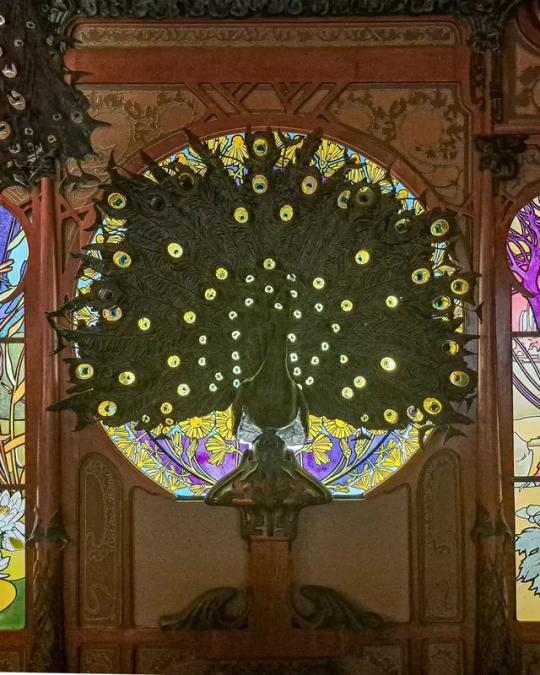
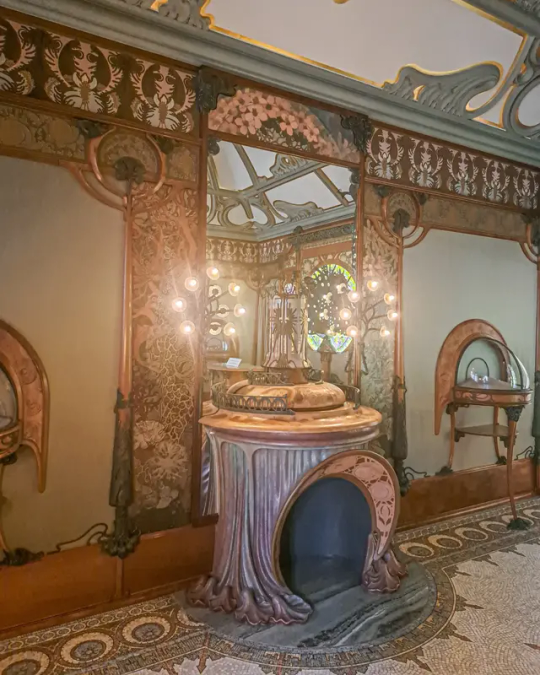


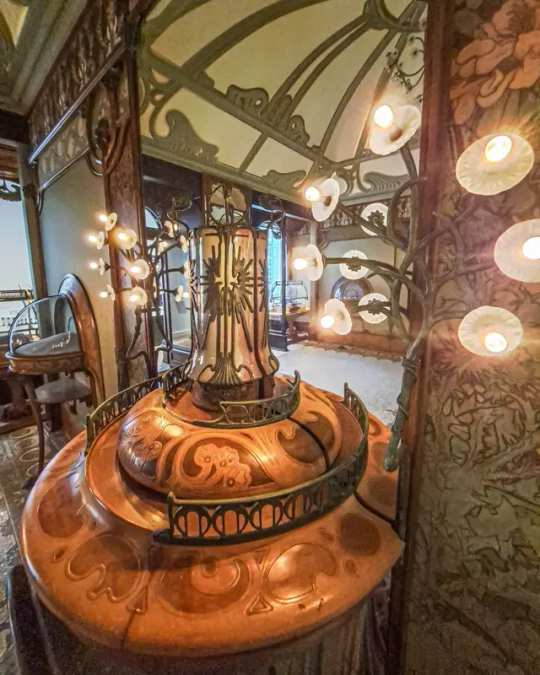

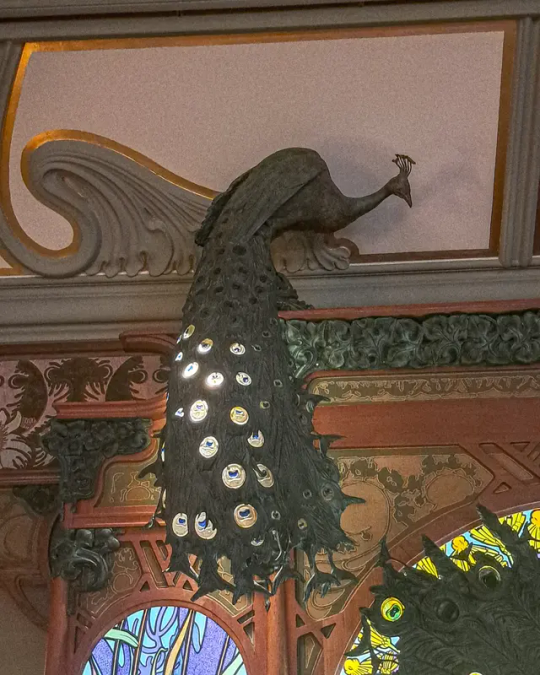


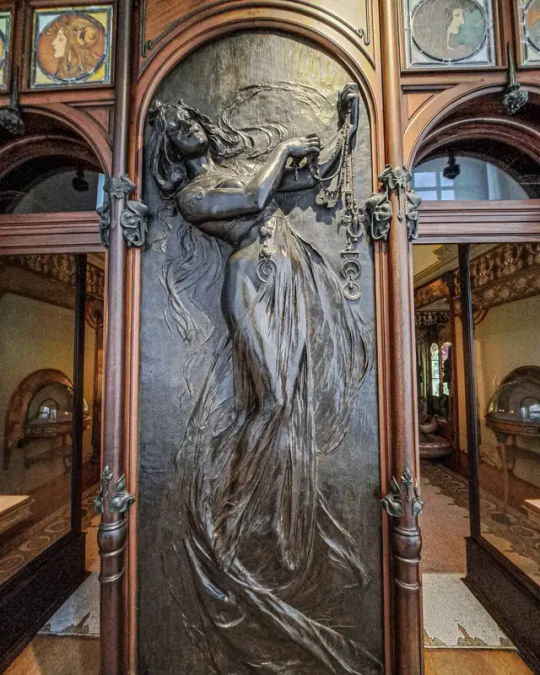
The most famous art nouveau style shop interior must be the shop of Nicholas Fouquet
L
Because of the particularly remarkable decorations of the Fouquet jewelry store, reconstituted and presented within the collections of the Carnavalet museum, you are immediately immersed in the Art Nouveau style, born in Belgium and further developed in France (and later also other distinct european regions), which will dominate the architecture, the decorative arts then the plastic arts (paintings, sculpture) until the First World War. A style characterized by curved and elegant lines; floral, plant or animal motifs inspired by nature; slender and idealized female silhouettes with extra long, flowing and evanescent hair. A style that will also put color back at the heart of arts and architecture.
To create the decorations for his jewelry store, presented here at the Carnavalet museum, Georges Fouquet (1862-1957) called on the Czech Alfons Mucha (1860-1939), an essential and emblematic illustrator of Art Nouveau from the end of the 19th century . Mucha was born on July 24, 1860 in Moravia, a region today partly encompassed by Czechia. After passing through Prague, Vienna and Munich, he arrived in Paris in 1887 to study art. At the same time, he gradually became known by producing magazines, illustrating catalogs or creating sublime advertising posters. His portraits of the famous actress Sarah Bernhardt, like those of many women in a vaporous and typically Art Nouveau style, made him famous. So much so that he was officially rewarded for his talents at the Paris Universal Exhibition in 1900, notably thanks to a collection of jewelry that he designed.
This is how, in 1901, Georges Fouquet invited Mucha to design the decor for his new jewelry store located at 6 rue Royale, between Place de la Concorde and La Madeleine. The artist created a modern and functional boutique (Art Nouveau is in fact a quest for both aesthetics and functionality), designed as a work of art in its own right. Mosaics, furniture, display cases, stained glass windows, lighting, door handles... everything in the decorations and volumes is of naturalistic inspiration, with a lot of curves, plant and floral motifs, or even animal motifs (the bronze peacocks behind and in the (counter tops are beautiful). A central figure in Mucha's work, the elegant woman is present here too, but mainly in front of the store or in small touches inside. Dreamlike, magical and almost phantasmagorical, the powerful settings imagined by Alfons Mucha will surprise, fascinate and seduce his contemporaries. Dismantled in 1923, most of the shop's decor was given to the Carnavalet museum by Georges Fouquet in 1941. But only in the 1980's the shop interior was reconstructed in the museum.
#europe#historic buildings#historical#architectural history#art history#history#paris france#paris 2024#paris#art nouveau#artnouveau#modernismo#jugendstil#stile liberty#alphonse mucha#shop window#shop interior#histoire#historical interior#museum#musee#museecarnavalet#france#peacock#interior#colorful#lighting#beautiful#travel memories#citytrip
49 notes
·
View notes
Text
I really wish we had more lore information on the five (biological?) children of the Nightmother and Sithis. If we're to take the tiny skeletons scattered around the Nightmother's crypt as the actual kids she birthed and then sacrificed, they must have been pretty young when they died. However, the crypt skeletons aren't arranged like they were killed and then laid to rest. They're scattered; strewn across the floor and steps like they were thrown there or died while trying to crawl up the catafalque. The Nightmother appears to be in relatively peacful repose, and certainly her corpse is about as well tended as one could be by the events of Skyrim, so it's odd that the persumed bodies of her children, the five original Speakers and the actual blood of Sithis, are treated with so little care.
#tw child death#elder scrolls lore#dark brotherhood#The Nightmother#tw murder#The entire thing scritches the theological and architectural parts of my brain#And yes this line of musing was inspired by the door in the Oblivion remaster being wrong#tes iv oblivion
13 notes
·
View notes
Text

Appartements Napoléon III, Musée du Louvre, Paris (by gabb).
#france#paris#louvre#musee du louvre#louvre museum#appartements napoleon iii#napoleon iii apartments#19th century#art#architecture
16 notes
·
View notes
Text
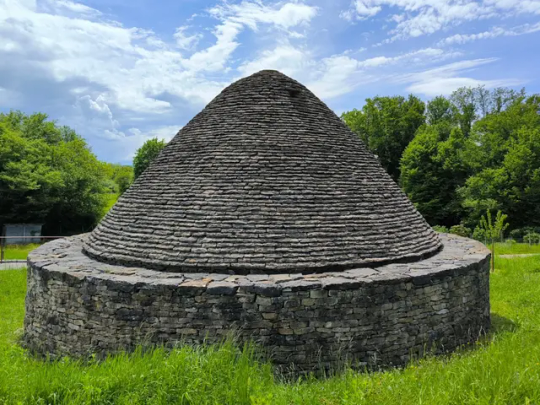
#Caborde #architecture #instarchitecture #enFlanant #visite #musee #nancray #maisonsComtoises #balade #friends #friendship
#Caborde#architecture#instarchitecture#enFlanant#visite#musee#nancray#maisonsComtoises#balade#friends#friendship
20 notes
·
View notes
Text
Watch me enter a psychogeography era
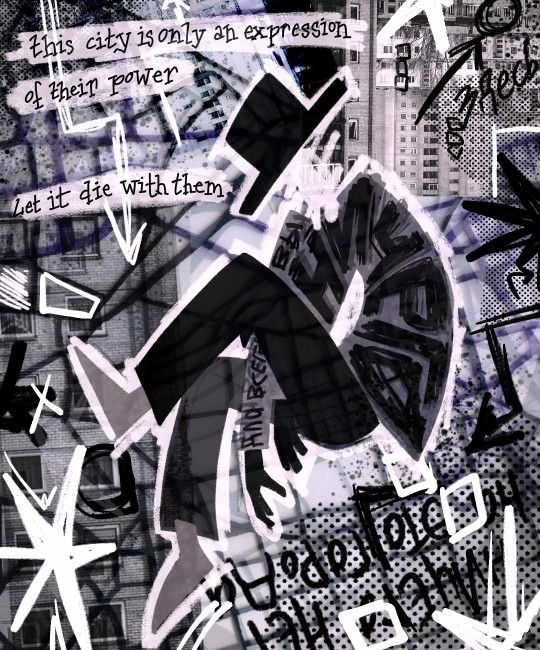
A friend of mine recommended a documentary to a friend of mine who recommended it to me. It was extremely interesting.
I'm trying things.
#psychogeography#brutalism#deconstruct your citites#soviet architecture#modern art#what am I even supposed to put in those tags#MUSE PROPAGANDA (this is an art tag)
65 notes
·
View notes
Text
The more I read about Babylonia, the more I realize the Romans were essentially copy-pasting a good 80% of their technology, enhanced by coinage and lightweight communication methods.
The Romans also loved stone more than the Babylonians. An abnormal amount. I say that as someone who loves rocks. They loved stonework.
#Babylonians saw clay available to be molded into any shape with the bonus of Brick and went ham. <- Advanced society.#Roman Empire 24/7 boys need to get on my level. /j /j#Free PhD question: Does the geology/geography of Roman masonry correspond with any metaphoric meaning?#I was trying not to ramble in the comments but it's late and I'm tired and my mind is revolving with unanswered questions.#How much did Rome bounce off of Egypt instead of Babylonia? I want to say more than Babylonia because of that stonework#trend; but that makes more sense in regards to proximity to Egypt rather than cultural osmosis. Then again Greece is the trading partner in#the middle there and I'm heavily discounting their influence.#This is all very stupid musing anyway because I don't have a specific technology I'm tracking. I think I'm wondering about aqueducts#because I just learned that Babylonians used them frequently but I've never heard of the Egyptians doing the same.#This could be Egyptian anti-aqueduct bias tbh. Nobody cares about Egyptian technology except to build the pyramids.#You know what I could do tomorrow? I have a book on my shelf about the architecture of ancient megastructures my brother got#me for christmas and that would probably answer 90% of my questions.
17 notes
·
View notes
Text
Hotel Salm, Palace of the Legion of Honor, Paris. ೄྀ࿐

#Hotel de Salm#Palais de la Legion d'Honneur#Musee de la Legion d'honneur#Rue de Lille#French Moments#Street Scene#Architecture#Paris#France
75 notes
·
View notes
Text
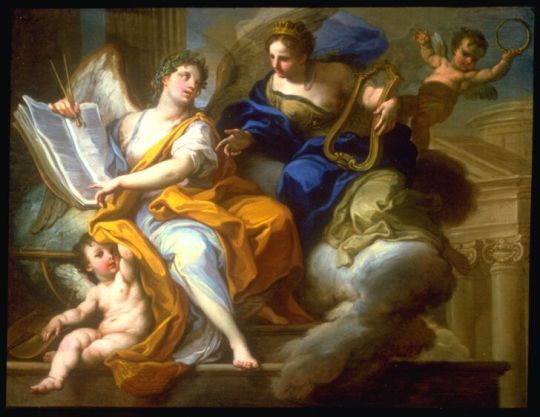
Fame and Erato, Muse of Love Poetry
Artist: Sebastiano Conca (Italian, 1680-1764)
Date: c. 1725
Medium: Oil on canvas
Collection: University of Michigan Museum of Art, Ann Arbor, Michigan, United States
Description
The precise subject of this painting is not clear, but it appears to represent the Muses of epic and lyric poetry, Calliope and Erato. The figure on the right, Erato, is identified by her lyre—the attribute of the Muse of lyric and amorous poetry. The figure on the left is more difficult to identify because Conca did not follow closely the standard representations of allegorical figures. The presence of the globe and of the compass held by the winged goddess are attributes of Urania, the Muse of astronomy, while the book and crown of laurel are attributes of Calliope, the muse of epic poetry.
#allegorical art#allegorical scene#muses#epic poetry#lyric poetry#globe#compass#winged goddess#urania#muse of astronomy#book#laurel wreth#calliope#muse of epic poetry#female figures#putti#mantle#cloud#golden crown#blue mantle#lyre#gold circlet#neoclassical architecture#fluted columns#entablature#open book#painting#oil on canvas#fine art#oil painting
16 notes
·
View notes
Text

L'église d'Auvers-Sur-Oise, Vue du Chevet (The Church of Auvers-Sur-Oise, Seen from the Apse)
Artist: Vincent Van Gogh (Dutch, 1853 - 1890)
Date: 1890
Medium: Oil on canvas
Collection: Musée d'Orsay, Paris, France
Description
This is the only painting representing in full the church in Auvers that may sometimes be distinguished in the background of views of the whole village. This church, built in the 13th century in the early Gothic style, flanked by two Romanesque chapels.
#church#chapel#post impressionism#path#the church of auvers sur oise#artwork#grass#trees#architecture#human figure#blue horizon#painting#oil on canvas#fine art#oil painting#dutch culture#dutch post impressionism#post impressionist art#dutch art#vincent van gogh#dutch painter#european art#19th century painting#musee d'orsay
13 notes
·
View notes
Text


https://www.instagram.com/spiralsinshadows?igsh=NTc4MTIwNjQ2YQ%3D%3D&utm_source=qr
#dark academia#author#wanderlust#aesthetic#spilled ink#poetry#writeblr#bookworm#literature#photography#travel#spilled thoughts#green academia#art history#architecture#church#musings#spilled words#poem#creative writing#statue#religion#writer#chapbook#traveler#camera#collage#art
10 notes
·
View notes
Text
Paris: A Year Abroad in a short film
Audio: "Burnt Norton" by Lana Del Rey, a rendition of the original poem "Burnt Norton" by T.S. Eliot.
Where do I even start? Paris has wholly shaped me in ways I never imagined. We refer to Paris as the city of love, but I'm now more inclined to call it the city of art - which only leaves more room for love in your heart. There is so much to contemplate and appreciate in frequenting the vast array of art museums here - from the Louvre, Musée d’Orsay, Musée de l’Orangerie, the Centre Georges Pompidou, and many more. Not only has my perspective on art expanded, but so has my worldview. That’s because art is truly everywhere in this city; art can be found in the walkable streets amidst the rich architecture, the fashionable outfits seen in daily life, and even the exquisite decor in stores and when you cheekily peek into Parisian appartments!
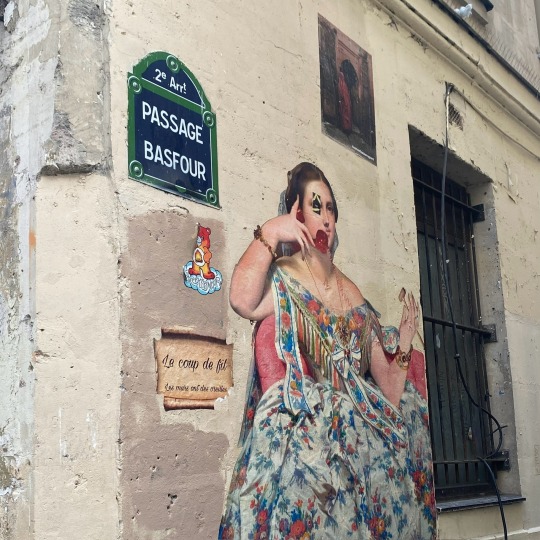
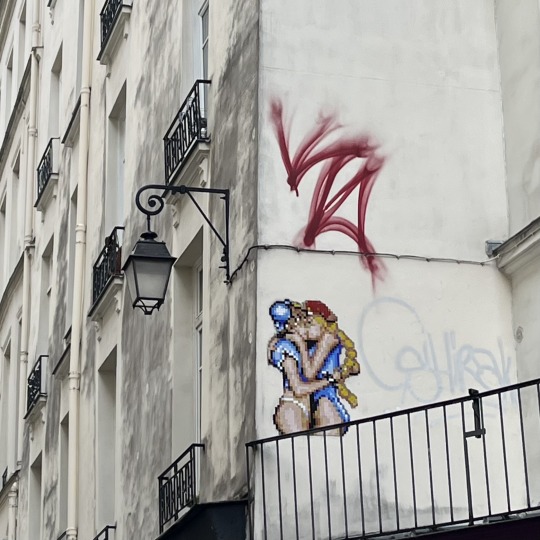
There's always something new to discover in Paris, I'm almost saddened at the thought of the things I've yet to discover or missed. The treasures to unveil in Paris move far beyond the typical tourist hotspots we all know and love. I am obsessed with Parisian boutiques; they are chic and unique (that unintentionally rhymed) in the best way possible. One of my favourites is La Tonkinoise à Paris, located in the 11th arrondissement. This particular arrondissmenet is the best in Paris to be honest, it holds a special place in my heart as I had the wonderful opportunity of living there, so perhaps you can say that I am somewhat biased. Still, I can confidently say that this animated, hip and creative neighbourhood is one everyone should have the chance to explore.
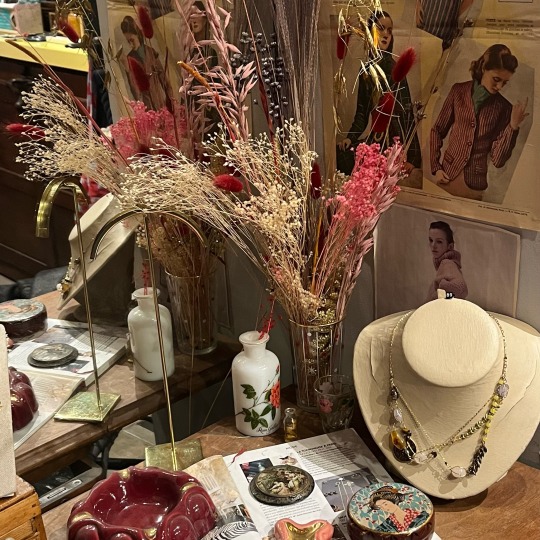

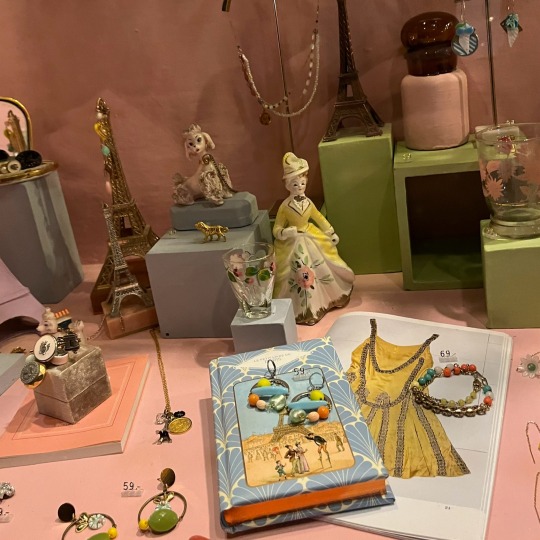
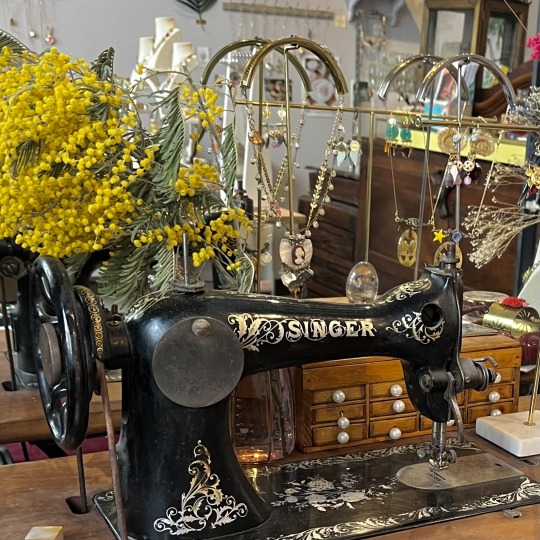
La Tonkinoise à Paris, owned by the lovely Chantal, is my favourite hidden gem in Paris. I had the pleasure of befriending Chantal as I ended up frequenting her store one too many times; I've garnered quite a collection over time. This boutique offers a wide range of eccentric and sustainable jewellery, with her earring creations being the show stoppers, in my opinion. Her jewellery is composed of rings, pearls, brooches, charms, and watches, all unearthed in flea markets and recycled. I love that every piece of jewellery indeed is a unique piece. The decor changes based on the season and theme of her new collections, making it an ever-changing and exciting shopping experience. This is honestly the best jewellery store I have ever been to in my life! I wish the pictures I took could do the jewellery and the boutique's decor justice, but it simply won't, I'm afraid.

Now, onto food, I genuinely need to figure out where to start here. My favourite authentic French restaurant would have to be 'Le Potager du Père Thierry', located in Montmartre. Although it's incredibly small, I love the cosy vibe; I feel like I can enjoy delicious food with friends without feeling surrounded by strangers. Surprisingly, it's also very quiet (yet packed) - I guess the food is just too distracting.
As of late, my favourite non-french restaurant has to be 'Big Black Cook' (let's ignore how inappropriate that pun is, though funny). It's located in the 2nd arrondissement and serves Caribbean food, my friend claims that it was the best meat she's had!
For brunch, I recommend Café Méricourt in the 11th arrondissement. Their green Eggs & Feta are absolutely incredible and quite innovative as far as brunch places go.
As for a boulangerie - seriously, anywhere, literally anywhere in Paris, go to your nearest bakery; there need not be a big fuss - you're in for a scrumptious baked treat regardless!

I'm ever so grateful for the chance to have lived in Paris for an extended period; you cannot appreciate Paris in its entire splendour from a mere short-term visit. The city is an actual work of art; art is everywhere in the city, from the street performers and musicians, the light filters through the trees, the city's many architecturally rich bridges, the picturesque cafés and boulangeries, the beautifully presented food, the way that the city's many different neighbourhoods each have their own distinct character and vibe. In Paris, art is everywhere.
#paris#short film#year abroad#france#travel#paris france#lana del rey#burnt norton#my film#film#fragments#memoirs#art#french art#boutiqueshopping#arrondissement#architecture#interior design#decor#decoration#parisian style#fashion#tour eiffel#montmartre#street art#parisian#louvre#musee d'orsay#french food#foodie
75 notes
·
View notes